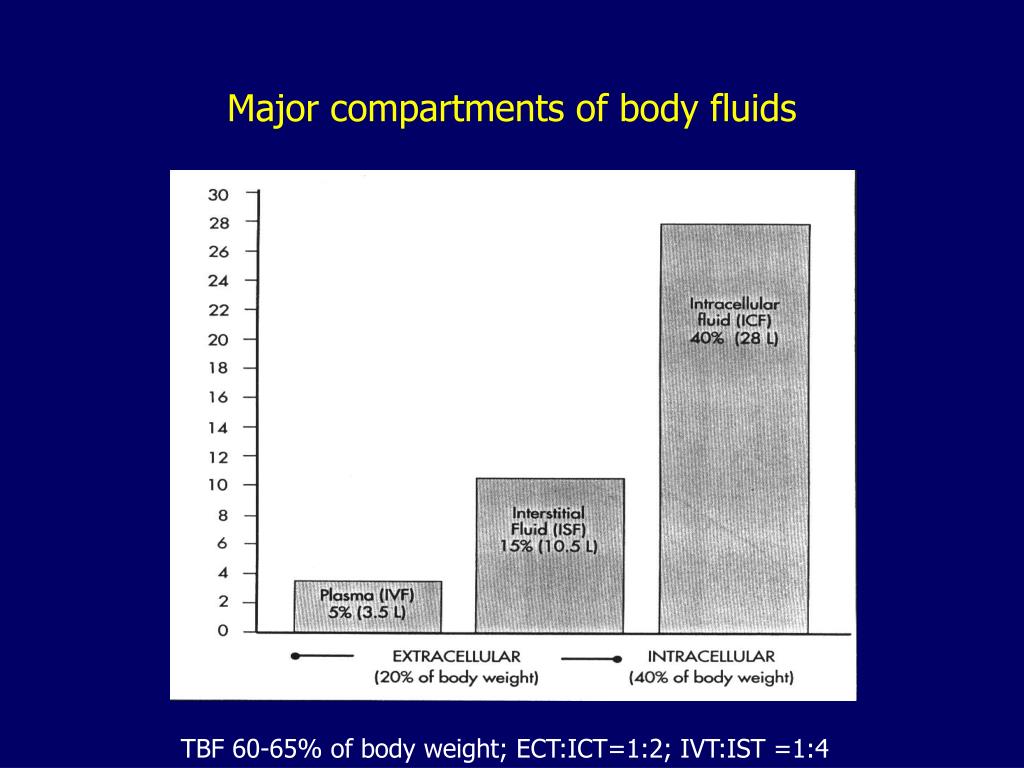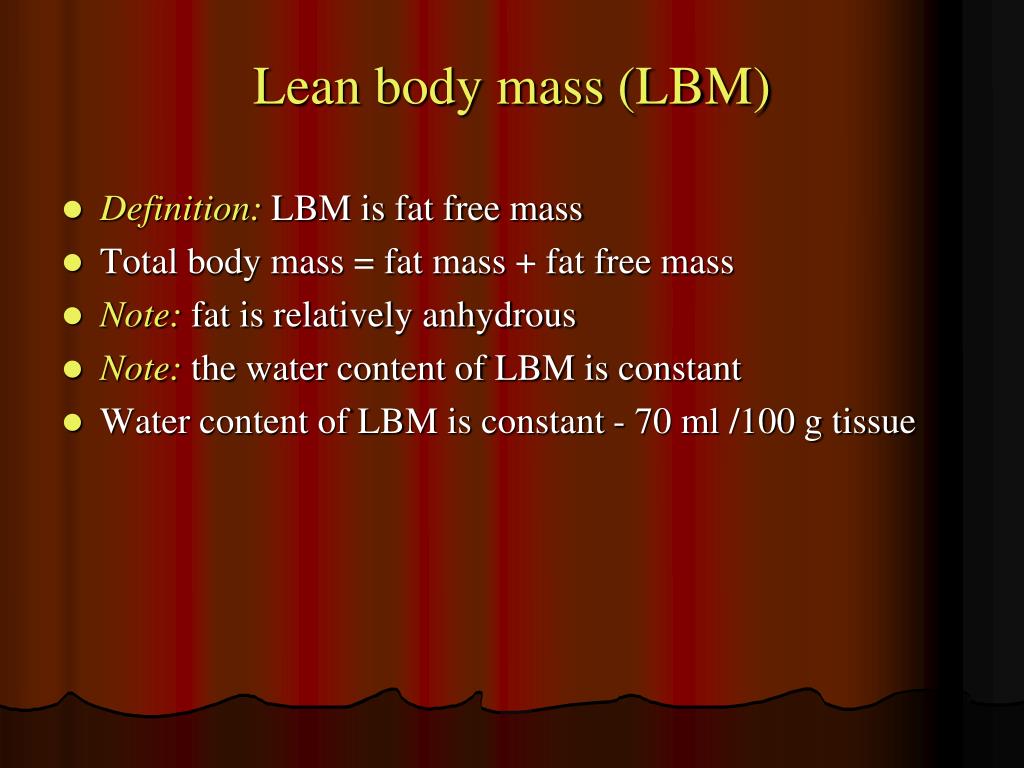


In lean healthy adult men, the total body water is about 60% (60–67%) of the total body weight it is usually slightly lower in women (52-55%). What percentage of the body is fluids by weight?īody fluids, bodily fluids, or biofluids are liquids within the human body. The extracellular fluid comprises approximately 20% of total body weight and further subcategorizes as plasma at approximately 5% of body weight and interstitial space which is approximately 12% of body weight. What are the percentage of fluid compartments of body water? 8 Where are the body fluid compartments located in the body?.7 How much body fluid is composed of water?.6 What are the three fluid compartments of the body quizlet?.5 What is the approximate percentage of fluid in the ECF and ICF fluid compartments?.2 What percentage of the body is fluids by weight?.1 What are the percentage of fluid compartments of body water?.Chapter 7 describes the basic characteristics of home-ostatic control systems and the required cellular communications. Part 2 provides the principles and information required to bridge the gap between the functions of individual cells and the integrated systems of the body. Because the fundamental features of cell function are shared by virtually all cells and because these features constitute the foundation upon which specialization develops, we devote Part 1 of the book to an analysis of basic cell physiology. With it in mind, the overall organization and approach of this book should easily be understood. This completes our introductory framework. How this barrier normally keeps 80 percent of the extracellular fluid in the interstitial compartment and restricts proteins mainly to the plasma is described in Chapter 14. In contrast, the two components of extracellular fluid-the interstitial fluid and the blood plasma-are separated by the cellular wall of the smallest blood vessels, the capillaries. In the case of the body-fluid compartments, the intracellular fluid is separated from the extracellular fluid by membranes that surround the cells the properties of these membranes and how they account for the profound differences between intracellular and extracellular fluid are described in Chapter 6. These movements in turn account for the differences in composition of the different compartments.

The properties of the barriers determine which substances can move between contiguous compartments. (We shall see in Chapter 3 that the inside of cells is also divided into compartments.)Ĭompartmentalization is achieved by barriers between the compartments. The remaining one-third (14 L) is extracellular and as described above, 80 percent of this extracellular fluid is interstitial fluid (11 L) and 20 percent (3 L) is plasma.Ĭompartmentalization is an important general principle in physiology. Two-thirds of this water (28 L in a typical normal 70-kg person) is intracellular fluid. Water accounts for about 60 percent of normal body weight. In essence, the fluids in the body are enclosed in "compartments." The volumes of the body-fluid compartments are summarized in Figure 1-3 in terms of water, since water is by far the major component of the fluids. (The actual differences will be presented in Chapter 6, Table 6-1.) In contrast, the composition of the extracellular fluid is very different from that of the intracellular fluid, the fluid inside the cells. With this major exception-higher protein concentration in plasma than in interstitial fluid-the entire extracellular fluid may be considered to have a homogeneous composition. Because of these exchanges, concentrations of dissolved substances are virtually identical in the plasma and interstitial fluid, except for protein concentration.
Body fluid compartments percentage plus#
The remaining 20 percent of the extracellular fluid is the fluid portion of the blood, the plasma, in which the various blood cells are suspended.Īs the blood (plasma plus suspended blood cells) flows through the smallest of blood vessels in all parts of the body, the plasma exchanges oxygen, nutrients, wastes, and other metabolic products with the interstitial fluid. Vander et al.: Human Physiology: The Mechanism of Body Function, Eighth EditionĬHAPTER ONE A Framework for Human Physiology fluid is known as interstitial fluid. Because it lies "between cells," this 80 percent of the extracellular Approximately 80 percent of the extracellular fluid surrounds all the body's cells except the blood cells. It was not stated earlier that extracellular fluid exists in two locations-surrounding cells and inside blood vessels. To repeat, the internal environment can be equated with the extracellular fluid.


 0 kommentar(er)
0 kommentar(er)
